Story of the J-Class Yachts:
| |
The J-Class was adopted for America's Cup competition in 1928, looking forward to the next regatta in 1930. The Class itself, though, dated back to the turn of the century when the Universal Rule was adopted though no J-Class yachts had yet been built.
The Rule used a yacht's various dimensions to calculate an equivalent rating in feet. Boats of equal rated lengths could then race against each other directly without making other allowances for time or distance sailed. Even though one yacht might have a longer length or another yacht a larger sail area, their overall configurations had to produce a rated length that met the Universal Rule for that class. Boats in Class J, more commonly today termed J-Class yachts, were the largest constructed under the Universal Rule. The Rule actually includes provisions for an even larger type of boat, the I Class, though none were ever built. Inquiries made in the 1930s for a Defense in the smaller K Class were rejected.
The J-Class were the first yachts in an America's Cup match to be governed by a formal design rule. Previous defenders and challengers were only restricted by minimum and maximum lengths set forth in the Deed of Gift. Sir Thomas Lipton, challenging in 1930 for the fifth time, had held earlier discussions with the New York Yacht Club in hopes of adopting the Universal Rule for the previous America's Cup match, intended for 1914 but delayed until 1920. Though an agreement to use the rule was not reached for that match, the 1914 US boats, Vanitie and Resolute, still roughly followed J-Class parameters.
Building Program:
There were only 10 J-class yachts designed and built. Additionally, several yachts of closely related dimensions, mostly 23-Meter International Rule boats, were converted after their construction to meet the rating rules of the J-Class.
Only the purpose-built Cup yachts, though, could compete in the America's Cup. The "converted" J-Class yachts, while acceptable for Class racing events, were not admissible for America's Cup competition. Responding to issues that surfaced in earlier defenses, the America's Cup rules required that all boats had to be sailed to the event on their own bottom. Some critics pointed out the possibility that the challenger might, as a result, be disadvantaged by being of heavier construction than the defender. In order to avoid a situation that could be perceived as an undue advantage, the NYYC eventually agreed that all America's Cup J-Class yachts would be built to Lloyds A1 standards, ensuring that defender and challenger met the same minimum construction specifications (the nautical term is "scantlings"). Most existing yachts were not built to such standards, so the Cup-eligible boats thus ended up heavier than the ineligible J's.
(The issue of challengers having to build heavier boats due to the ocean crossing was a popular, if uncertain, explanation in the British press for the long string of American victories. In practice, a number of challengers added internal bracing for the crossing, which was then removed before racing. And on a few occasions defenders subsequently made the crossing in reverse in search of competition following their successful defense. The rule requiring that the challenger sail to the event on her own bottom was actually instituted in response to a super-lightweight challenger towed to the match through canals and rivers from Canada.
The J-Class Yachts
| . Mahogany planking over steel frames. Pine deck. Spruce original mast replaced with duralumin. Led J's with double-headsail rig. Electric wind-speed devices. Sold to Pynchon. Whirlwind Syndicate: Landon Thorne, Alfred Loomis, Paul Hammond. Longest J-Class until 1937. Scrapped at City Island, 1935. | ||
| and winning by 17 hours. Raced in England, took eight first-place finishes in 32 races. Defense Trials, 1937, tested single-headed rig, mast step moved forward, lowered center of ballast, larger mainsail. Sold for scrap by Lambert (reportedly for $10,000) in April, 1941, Fall River, MA, with proceeds donated to war effort. Tender: | ||
| also raced in the off-years between defenses. 1930 Tender: . | ||
| and (same No. 1 main was used on all three); Vanderbilt's 3 J's all used the tender , which also served the 12M defender candidate in 1958, and challengers (1962) and (1967); Launched May 11, 1937; Bath Iron Works Hull # 172; built at cost; funded solely by Vanderbilt; named for US frigate commanded by John Paul Jones; largest displacement J-Class; Hauled at end of 1937 and never sailed again. Sold for scrap May, 1941, bringing $12,000. | ||
| (spelling uncertain but roughly "Four Leaf" in Italian as a play on her original name); ketch-rigged?; Appeared in movie "Swept Away"; Rebuilt at C&N 1967-70; Sold to Lipton Tea Co. 1986, donated to Newport Museum of Yachting; Restored under Elizabeth Meyer 1989, rig, bulwarks, deckhouse rebuilt to original; sold to Newport Yacht Restoration School 1995; sold to Newport Shamrock V Corp 1998; refit 2000 at Pendennis, under Gerard Dykstra; sold to Marcos de Maraes, Brazil. Lipton had a 23M yacht also named , sometimes confused with his America's Cup boats. The 23M was broken up in 1933. | ||
| | ||
| 's keel; Ends modified 1935; Name combines Stephenson's daughters Velma, Daphne, and Sheila; (laid up 25 years?); Restored Terry Brabant 1983, maintaining very original condition; Sailed as charter; Sold to Swiss owner, refit stalled for lack of funds; Laid up Gosport; Sold in 1996, major refit 1996-7 at Southampton Yacht Services under Gerard Dykstra, interior, CF rig, sails, modernized, but less authentic; Current owner Ronald de Waal. | ||
| lost to in 1914 trials (defense postponed) and 1920 trials, losing 7-4 in final 1920 selection series. Owned by Alexander Smith Cochran. Not designed as a J, but altered after construction to rate as a J; not acceptable for AC as a J-Class yacht because lightweight, not Lloyd's A1. Sold to Gerard Lambert, 1928. Trial horse 1930 and 1934 America's Cup defender trials. Laid-up at Herreshoff Mfg. and scrapped there in 1938. | ||
| | ||
| | ||
| | ||
| by Nicholson for Italian Owner; restored 1989. | ||
| in fleet racing on the Clyde, 1894; Built for HRH Albert Edward, Prince of Wales; Sold to private owners, 1897; Bought back in 1902, after the Prince had acceded to the throne as Edward VII; Passed to his son George V after Edward's death in 1910; Rated after construction as 23M; not designed as a J, but altered in 1931, converted to "Marconi" rig, sail area 8,700 sf, triple-headed, and rated as a J; modified to double-headed-rig and Park Avenue boom in 1935; Scuttled off the Isle of Wight by Edward VIII, July 9, 1936, as per wishes of his father, George V, who did not wish to see the yacht live on to a life of decline once he was gone. | ||
Disposition:
Conceived at the height of the affluent 1920's, the J-boats arrived during the Great Depression. They required enormous crews, and, despite expert attention to their technical details, still broke an astonishing number of masts. While they were in most regards the most advanced sailing yachts yet built, and they were indeed powerful sailing thoroughbreds formed in sleek lines that can race the pulse of almost every viewer, the glorious J's proved too extravagant for their own good. Most had very limited sailing careers outside of America's Cup. Ranger , whose 1937 cost was upwards of $500,000, was laid-up at the end of her debut season and never sailed again. All of the American J's were scrapped between 1935 and 1941. Most of the British J's were either abandoned or scrapped.
When NYYC sought to revive the America's Cup in the 1950s, there was a faction that favored returning to the J-Class. Mike Vanderbilt even stated that not only would he like to see the Cup contested in the large boats, but that if so he would consider rebuilding a new Range r to the design of the original. Still, another faction hoped for smaller dual-use yachts that could be used in offshore racing when the Cup year was ended. With cost estimates for a 1958-era J starting around three million dollars, the impulse for a J-Class defense faded away in the face of economic pressures and a compromise was reached to sail the America's Cup in International Rule 12-Meters.
| , the 1930 Challenger, and , the 1934 Challenger. , distinguished by being the only yacht built as a J-class though not intended for America's Cup, is intact and sailing, too. Of at least seven other boats that were rated as J's, two remain: , and . was originally a 23-Meter International Rule yacht, but later altered to rate as a J. The surviving boats have all had extensive restoration and re-building. was rescued from near oblivion, too delicate to move without structural reconstruction. |
The J-Class Resurgent
J-Class rigs today are no longer built of wood or dur-alumin, but with modern lightweight composites. Their sail technology is long past being canvas duck, and many other subtle changes have been made to make the ongoing maintenance and operation of these yachts a realistic proposition. Still, the J-Class owners have gone to great lengths to insure the integrity of the boats. The J-Class is self-administered, rather than governed by an outside organization as is the case with almost all other classes. This allows the members to more easily adapt the rules in order to serve the needs of these uniquely historic yachts.
Most of the surviving J's are available for charter. Cambria was reportedly for sale in 2000. Endeavour changed hands in 2006 for a reported $13.1 million USD, though as her former owner Dennis Kozlowski said, "No one truly owns Endeavour . She's a part of yachting history.''
Recreations, Replicas, and a Tender:
For decades, most yachting fans thought that we would never again see the likes of these boats again, the few survivors would sooner or later fade away, and the whole history would be reserved for books and fading photographs, but following the restoration of the surviving hulls rumors grew throughout the late 1990's and early 2000's about building "new" J's. In 2001, all of this dock talk began to become reality:
Ranger Wooden Boat magazine, March/April 2001, described a "Dutchman" who had commissioned a new Ranger built to the original's plan. This incredible rumor came true, and a piece of lost sailing history was brought back to life. The new version of this "Superboat", as Mike Vanderbilt once called her, was officially launched in October, 2003.
Designed by Studio Scanu and Reichel-Pugh, and built by Danish Yachts, Skagen, Denmark, she is not an exact replica of the original. Some would term her a re-interpretation, as a number of changes were made including greater freeboard, and Ranger 's original designers did not participate in the project. The new Ranger first competed head-to-head against other J's in Antigua, Spring, 2004. It took some additional adjustment after launch by her owners and designers to seek the proper trim that would make her float on her lines, an essential step in the process of being officially rated a J-Class yacht. Visit the Ranger Website for more info. J-Class Management is also at work on a restoration of Bystander, tender to the original Ranger .
Endeavour II An Endeavour II replica is being built at Royal Huisman Shipyard, with a planned 2008 launch date. Gerard Dykstra and Partners is leading the project, which features a lightweight Alustar (aluminum alloy) hull and carbon-fiber mast. See additional photo at Yachtspotter
| | |
Lionheart Based on an unbuilt alternate design by Starling Burgess and Olin Stephens II that was considered for 1937's America's Cup defender Ranger , this new boat is being built at yards in the Netherlands for an expected 2008 launch. Lionheart will be the longest J-Class yacht when completed. See more including photos of the completed hull at the Lionheart Website and the story of sailing onboard including photos and videos Cruising J-Class Style Aboard Lionheart at Yachting World Designer: Hoek Design Builders: Bloemsma Aluminiumbouw and Claasen Jachtbouw BV
Svea Tore Holm's unbuilt 1937 design, said by some to be faster in the test tank than any of the original boats, is being pursued by Hoek Design
Name To Be Announced In late March 2008, reports of another replica about to begin construction appeared on the Classic Boat website . Whether this is one of the known projects, such as Svea , above, or yet another replica about to become reality, such as Rainbow , below, should become known shortly.
Rainbow In late May, 2008, Dykstra and Partners announced that a new build of the 1934 America's Cup Defender Rainbow was underway, with an expected launch date of 2010. Read the Press Release
Other projects: Hoek Design is also studying replicas of 1930's Enterprise and another boat from Yankee designer Frank Paine. Yankee herself has also been rumored as a new project, as well. Earlier reports of a Ranger alternate-design carrying the name of Seawolf may have been referring to the project that has become Lionheart , see above. Whirlwind and Weetamoe are the only two designs of the original ten J's that aren't known to be sailing, building, or under serious consideration as of 2008. The J-Class website points out that there are 10 unbuilt J designs from the 1930's, so the possibilities for more J-Class yachts are intriguing.
Yachting World reported in May, 2003 , that construction was underway on a yacht replicating the famous G.L Watson design Britannia . Photos showed a nearly completed hull at Solombala Shipyard, in Arkhangel, Russia, and included interviews with the yacht's owner Sigurd Coates of Norway. The design was adapted by Cesil Stephansen from published plans. The original designer's modern descendent company, G.L.Watson & Co., Ltd., has no involvement with the Arkhangel boat. Little was been heard of this ambitious project for years, until the yacht was finally launched only to become subject of a financial dispute, trapping her in Russia until 2009, when she "escaped" to Norway.
In the Spirit
A similar project to return elegant yachts to competitive racing, the W-class, was set in motion by Donald Tofias, an American enthusiast. He commissioned naval architect Joel White to design a new class with lines evocative of famous racing yachts like the New York 50's and the J-Class. The first two boats, Wild Horses and White Wings , were built in Maine of modern cold-molded wood construction and launched in 1998. It is Tofias' aim that there will eventually be a whole fleet of the beautiful W-class to regularly compete against each other. The one-design W-76 is actually similar to the New York 50's. Tofias' long-range plans involve a range of classes including 46, 62, 76, 105, and 130. The 130's would be nearly identical in basic dimensions to the J-class. See the W-Class Websit e .
Additional Links: Chris Cameron onboard Ranger at Maxi Yacht Rolex Cup, 2010: Photo Gallery
Web Sites of Particular Interest: The J-Class Association J-Class Management, Inc.
Further Notes:
K-Class: The Royal London Yacht Club made and withdrew its inquiry for a K-Class challenge in 1935. The intent had been to reduce costs, not the least of which was hoped to be a lower velocity of mast replacement, but the K-Class line of thought was rejected for several reasons. For one, the K-Class wasn't so much smaller than the J-Class as to have clearly led to significant savings. Additionally, no K-Class yachts existed on either side of the Atlantic while several J's of various pedigree were available for testing, training, and racing in 1935. Also a factor was that the NYYC was already actively considering another challenge at the time the RLYC began their communication about the K-Class and it was the NYYC's policy to consider only one challenge at a time, in keeping with the Deed of Gift.
Sailing to the Event on Own Bottom: This provision of the Deed of Gift was at times strictly interpreted to the the degree of making sure that the challenging yacht actually was under her own sail while traveling to the match, not towed by another boat. Challengers returning across the Atlantic after Cup matches concluded were sometimes towed for convenience. Eventually the NYYC agreed at various times to permit towing the yachts to the match, particularly when conditions were light, and in 1956, for the coming of the 12-meter yachts in 1958, the Deed of Gift was amended to eliminate the requirement.
CupInfo Home
Before the J Class yachts came into existence, yachts were designed to be bigger and bigger. The towering rigs of the Big Boat Class such as ‘ Lulworth ’ and ‘ Britannia ’ dwarfed all other yachts. The late 1920s heralded discussion and agreement of the Universal Rule. This new formula controlled the size and displacement of the new yachts, enabling them to be raced as evenly as possible. Almost immediately, designs were being commissioned for the new, massive ‘Bermudan rigs, with no bowsprits’.
The rule was based on ideas proposed by Nat Herreshoff allowing waterline length to be increased without sail area being restricted, as it had been under the International Rule. This was compensated by a larger displacement and so draught was limited to 15ft.
In 1929 Sir Thomas Lipton, owner of Lipton’s famous for his import of Lipton Tea from India, issued his fifth challenge to the Americans for the America’s Cup. He commissioned the build of the first J Class Yacht which signified the start of a new era in design evolution and racing. On each occasion he challenged for the America’s Cup as a member of the Royal Ulster Yacht Club in Northern Ireland. RUYC are still involved with The Cup – presenting the Royal Ulster Cup to the Club of the winning challenger.
The Universal Rule came into effect in 1930. The size of a yacht was determined (by waterline length) and this was shown as an alphabetical list. “J” signified yachts with a waterline length of between 75 to 87 feet. The addition of the new design Bermuda mast allowed the yachts to carry a huge sail plan. Nothing so large and ‘awesome’ had been built previously. The Americans had a distinct advantage over Britain in the 1930 America’s Cup. They had the money to build four J’s over Britain’s one, yet the British yacht, Shamrock V was a hot contender. She was designed by Nicholson and built at the family yard in 1930, and before she crossed the Atlantic to attend the Cup she had notched up more than 700 sea miles (1,296km), won 15 out of the 22 races she had entered and had been tweaked and tested to a high degree.
In answer to Lipton’s challenge of 1929 the Americans designed four J-Class yachts as possible defenders. Enterprise, Whirlwind, Yankee and Weetamoe were launched within a month of each other; Weetamoe and Enterprise from the Herreshoff yard and Yankee and Whirlwind from Lawley & Son’s yard in Bristol.
Whirlwind, the second J, was the most revolutionary of the four. Francis L Herreshoff had moved away from conventional yachts and designed a boat, which took the new rule to its extreme. Whirlwind combined many new ideas and Herreshoff experimented with hull shape and rig. She was the longest of the early J’s at 86ft on the waterline and remained so until Ranger and Endeavour II were built in 1937.

She was built of semi-composite construction (the other three American Js were built out of the highly expensive Tobin bronze), was double-ended and had a permanent backstay. Uffa Fox described her profile as: “Very pleasing to the eye, the stem sweeping down to the keel in a very sweet line, and to a man who, like myself, believes that a pointed stern is a logical ending for all vessels, her stern is a joy to behold.” He predicted, “If the Yacht Racing Rules govern well and wisely, we shall see Whirlwind racing 50 years hence. If they do not she will probably be cruising then.” But Whirlwind met an early demise. Her building was delayed as she didn’t meet Lloyd’s A1 scantling rules and she wasn’t chosen to be the 1930s defender. She was often out-performed when close hauled, her steering gear making her difficult to steer. She was eventually scrapped along with Enterprise in 1935. However, her unusual double-headsail rig was later adopted by the rest of the Js.
The third American J, Yankee, was the best all-rounder. At 84ft on the waterline and 125ft length overall, she was solidly made of Tobin bronze and was extremely well balanced. Designed by Frank Paine , Yankee had an almost straight sheerline and easy lines. She was a powerful contender for defender, but not fine-tuned enough to succeed. She did, however, take part in the 1934 America’s Cup trials and with alterations to her rig, to carry more sail, and bow, which was lengthened and made more of a V-shape, she then proved more successful, especially in light winds.
The fourth of the American J’s was Weetamoe, which was designed by Clinton Crane and was the narrowest of the early four. Despite claims that Yankee was the best all-rounder, Weetamoe is said to have been the closest rival to Enterprise to be the Cup defender. Charles Nedwick, in Ian Dear’s book Enterprise to Endeavour, describes Weetamoe as having a profile “that is practically a triangle, with a straight line from the after end of the waterline to the bottom of the keel and thence a line which is slightly convex, and then slightly concave to the forward end of the waterline.” In an attempt to better performance and make her less tender, her profile below the water was radically altered in 1934 with a new contour and bulb keel. The alterations failed and not long afterwards were reversed. In common with the other J’s, she had about 43ft of overhang and her hull, Nicholson opined, “was the best of all the US Js”.
When Shamrock V and Enterprise eventually met off Newport, Rhode Island, later that year, the two J’s were well matched in hull profile, but differed significantly in rig. Enterprise’s rigging was lighter, she had the Park Avenue boom, which was so advantageous to windward, and had lots of winches on board. Shamrock V meanwhile, was under-winched and hard work to sail. She has since, however, proved her success in that she is still sailing today.
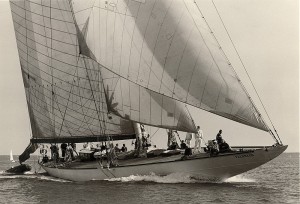
The sixth J-Class yacht to be built, and the second built on British soil was Velsheda . She was the only J not built as a contender for the America’s Cup. Her owner, WL Stephenson, who previously owned White Heather II, the 23-Metre converted to rate as a J-Class in 1930, had Velsheda built in steel in 1933 at the Camper & Nicholson yard. Velsheda was a great success. In 1935 she was significantly altered, her bow was snubbed around the waterline and her stern improved. The following season she won the King’s Cup at Cowes Week.
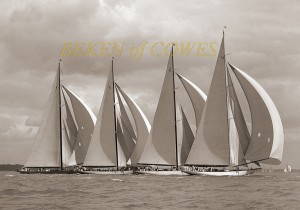
In 1934, Sopwith challenged for the America’s Cup. His challenger was Endeavour . She was Charles Nicholson’s third J-Class design and he said of her “She will have quite a normal hull… because I have thought it right to suppress possible experimental form, which would be most interesting to try out, but which I have to leave to American designers.” He did, however, produce the most beautiful J-Class and her rig was innovative.
Sopwith experimented with new running backstay strain gauges, which controlled the trim of the mast and used electronic windspeed and direction indicators. It has since been suggested that part of the reason for her failure in the Cup was due to all the gadgets on board. She was matched 83ft 3in on the waterline against Rainbow ’s 82ft. However, despite being thought to be the best challenger Britain has ever built, she did not win the Cup. Rainbow, which was considered the inferior boat, beat her by four races to two.

Rainbow was designed by W Starling Burgess and launched in 1934 from the Herreshoff yard where she was built in just 100 days. The J stepped a pear-shaped duralumin mast, designed to take the strain of the double-headed jib – first used on Whirlwind – and she was originally rigged with a Park Avenue boom. This was later removed because it was considered too heavy.
The UK Class was depressed with the death of King George V and scuttling of his yacht “Britannia” off the South of the Isle of Wight, in accordance with his will.
Of the American Js, Yankee was the only one to sail in British waters when she was bought by Gerald Lambert and crossed the Atlantic in 1935. She was scrapped in 1941. Enterprise and Whirlwind were both scrapped in America.
1937 saw the building of the last two J’s on both sides of the Atlantic. Both Ranger and Endeavour II took the waterline length to its extreme, measuring 87ft LWL . Ranger, the American boat, was built at Bath Ironworks in Maine and designed jointly by W Starling Burgess and Olin Stephens . It was a design combination, which produced the greatest J of the fleet – the ‘super J’ as she was later known. She was built, for the cost of the materials only, of flush riveted steel plating and soon after launching had an accident. The upper parts of her rod rigging which stayed her duralumin mast shook loose and her mast snapped “with a report like a cannon”.
Ranger’s success on the water was widespread. Of 37 starts she won 35. Owner-skipper Harold Vanderbilt described her as being “slower to turn and to pick up speed, but (she) held her way longer, and was perfectly balanced on the wind.” The challenger, Endeavour II, was designed by Nicholson again and built at the C&N yard. She too was steel, but flush-plated above and below the waterline. Sopwith towed her and Endeavour, plus an entourage of 100, to America where he worked on tuning her rig. Sadly, Ranger saw off the competition, easily winning four races, and dashing British hopes.
Although they became recognised the most beautiful yacht design in the world, only 10 J Class yachts were ever built – 6 in the USA and 4 in the UK. Most of these competed in trials for the America’s Cup, or competed in the Cup itself. Several existing large British yachts, ‘ Astra ’, ‘ Candida ’, ‘White Heather II’ and ‘Britannia’, the King’s yacht, were all converted to comply with the rule and raced alongside the J’s.
After the victory of Ranger over Endeavour II, Vanderbilt wondered whether the boat was so much faster than the competition that it might kill the class. History would show this was not the case as analysis of the Holm design shows that it would likely have been faster than Ranger.
1937 marked the end of an era – it was the last America’s Cup contest for 21 years and marked the end of Big Yacht racing. Shamrock V was sold to Mario Crespi, the Italian Senator and publisher, who converted her to a ketch rig and renamed her ‘Quadrifoglio’, with a literal translation giving her authentic name of ‘4 leaves’ in Italian. This was in accordance with an Italian law, which forbade foreign names.
Weetamoe was scrapped in this year, while at the end of the season Ranger was laid up, prior to being scrapped in 1941.
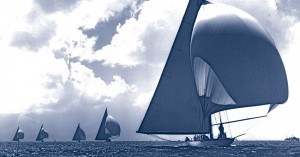

HANDLING THE J CLASS YACHTS IN THE 1930’s
The Skippers had to be experienced in racing and their skill on the race circuit became a matter of pride. These mighty craft had no engines and they had to be handled with great precision to get into and out of ports. Often their experience came from sailing all types of small craft, including fishing boats, during the winter months, when the J Class yachts were laid up. The permanent racing crew in the early days was probably around 16 men thou this may have been augmented to around 30 for racing. When not required for sail changes, spare crew were often moved to below decks.
With the incredible loads on the rigging and systems it was a constant concern that J Class masts could collapse in winds above a Force 3.
Sailing small boats in often inhospitable waters gave them the skills to manage their J Class yachts. The same is true today. Skippers have to deliver their yachts across Oceans, and compete around the race course, using their skills and all the technical advantages that are available today.
It is now clear that there was another J Class Yacht under development in 1937. Several years ago, drawings for a J-Class boat by Swedish naval architect Tore Holm were discovered by Fred Meyer, (Société Nautique de Genève – the Defender of the 32nd America’s Cup).
Now known as the Holm Project, this was to be a Swedish yacht with an innovative design. Many of the hull plates were made – and exist to this day. The project was put on hold prior to the outbreak of War in 1939 and was forgotten for more than 60 years. Endeavour and Endeavour II (K6) were laid up at Camper & Nicholson’s yard in Gosport, England.
Rainbow was scrapped. By the end of 1941, all the US yachts, which had been laid up were scrapped for their metal, with the last two being Yankee and Ranger. None survived. Yankee’s owner Gerard Lambert allegedly donated her scrap money from the yacht to Queen Mary to be used at her discretion in the London Hospital, in memory of the courtesies shown to Yankee by King George and the Queen herself.
Endeavour II was sold for scrap to Charles Kerridge Limited but her hulk remained until the late 1960s. Endeavour and Velsheda became houseboats in a mud berth on the River Hamble. This is where they stayed for more than 30 years, protected by the mud, which they had sunk into. Only Shamrock V was still sailing.
Endeavour II was broken up and scrapped in Southampton. Quadrifoglio (Shamrock V) had been hidden in Italy in a barn throughout the war years and following Crespi’s death in 1962 was sold to Piero Scanu, who saved her just two weeks before she was due to be broken up in Genoa.
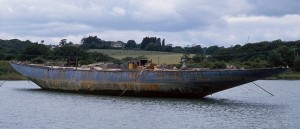
During the 1970s Endeavour’s hulk was sold for £10 and restoration was started.
Quadrifoglio (Shamrock V) arrived from Italy and was refitted at Camper & Nicholson’s yard where she had been built, supervised by Paolo Scanu the naval architect, and son of the owner.
The large holes in Endeavour’s hull were plugged and she was towed to the old seaplane base at Calshot Spit on the Solent to start restoration.
Terry Brabant rescued Velsheda from her Hamble mud berth and gave her enough of a refit to get her chartering and, occasionally, racing again in events like the annual Round the Island Race, hosted by the Island Sailing Club in Cowes. Despite being in rather poor condition she still acquitted herself well and looked magnificent from a distance. Swiss plans to restore her came to nought and the old racing yacht was eventually laid up afloat in Gosport. Elizabeth Meyer took on the challenge to continue with the rebuild of Endeavour at Calshot.
Quadrifoglio (Shamrock V) was purchased in 1986 by the Thomas Lipton Company, and given back her original name of Shamrock V, when she became the property of the Newport Museum of Yachting. Endeavour was towed from Calshot, to Cowes on the Isle of Wight to have her fittings and rigging fitted. She was then taken on a barge to the Royal Huisman Shipyard in Holland to continue and complete the rebuild.
Endeavour was relaunched in Holland. Endeavour and Shamrock V match raced each other over the Old America’s Cup course in Newport, Rhode Island in August.
Velsheda was purchased from a bankrupt C&N boatyard and brought to Southampton Yacht Services to start her rebuild. She was relaunched in 1998 and started her programme of racing and cruising around the World.
Velsheda, Shamrock V and Endeavour raced against each other in Antigua Classic Week.
The Owners met in England and formed the J Class Association to protect the interests of the Class, present and future. Class Rules were established for the construction of Replica Rebuilds from original plans. Shamrock V came out of a major refit at Pendennis in Falmouth under the supervision of the Dykstra office.

The first J Class Regatta is held in Christchurch Bay on England’s south coast over three days, followed by the Jubilee Regatta in Cowes.
Ranger replica was commissioned and construction started at Danish Yacht Shipyard.
Ranger was launched and started her racing programme.
Replicas of Endeavour II (Hanuman) and Ranger (Lionheart) are commissioned.
Replicas of Rainbow and Paine design (JH7) are commissioned.
Hanuman, replica of Endeavor II launched.
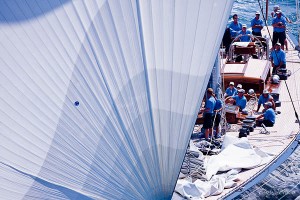
Lionheart launched.
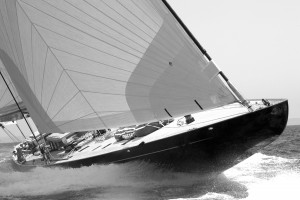
Rainbow launched. Cheveyo commissioned from Sparkman & Stephens / Spirit Yachts.

Information courtesy of the J Class Association
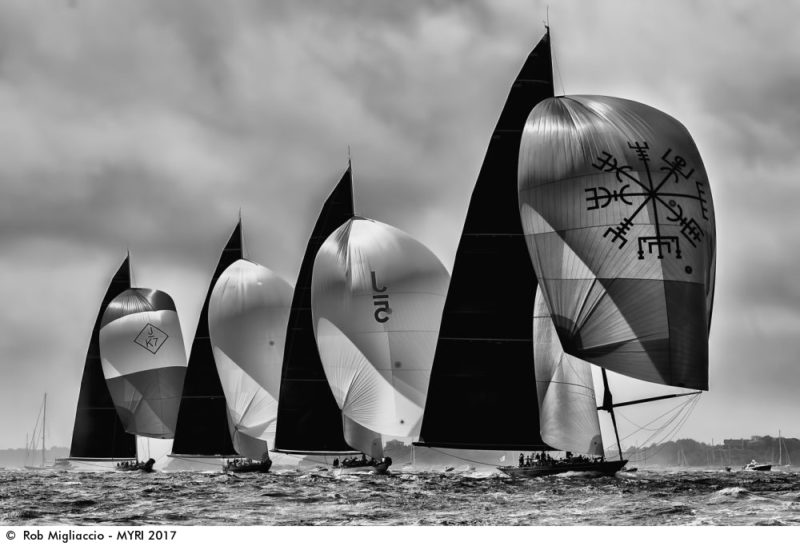
Svea, Velsheda and Topaz at the St Barths Bucket, 2018.
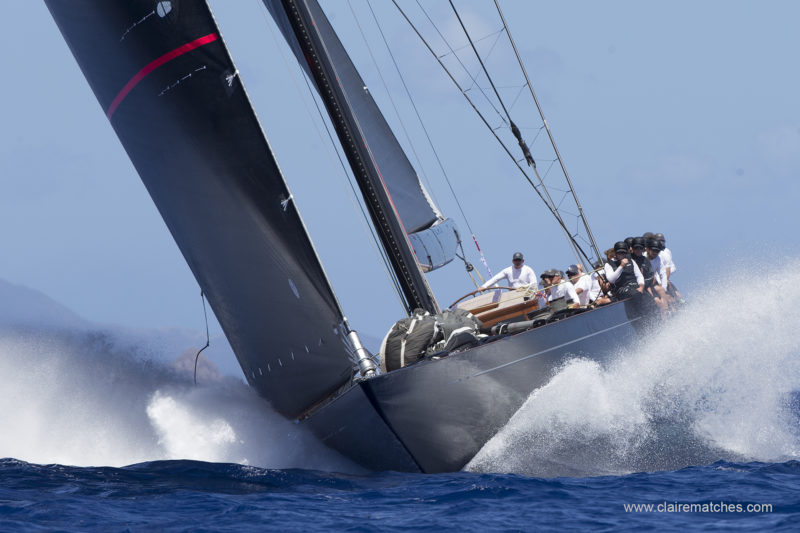
SHARE THIS:
- Yachts for Sale

Recently updated...
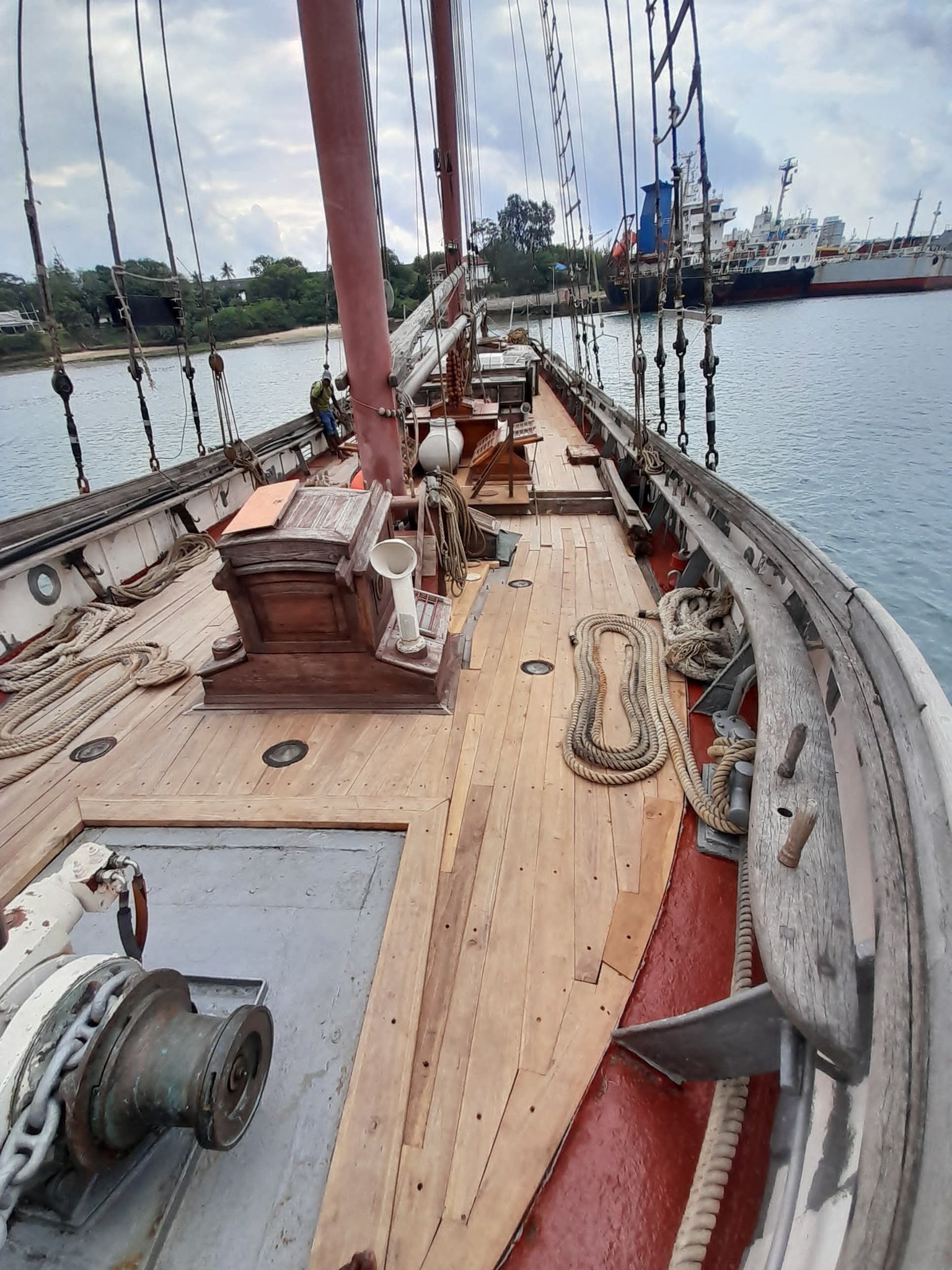
Write an Article
Covering news on classic yachting worldwide is a tall ask and with your input Classic Yacht Info can expose stories from your own back yard.
We are keen to hear about everything from local regattas and classic events to a local restoration or yachting adventure. Pictures are welcome and ideal for making the article more engaging.
With a site that has been created with the assistance of an international group of classic yacht enthusiasts we value your input and with your help we strive to make CYI more up-to-date and more informative than ever.
Please register and get in touch if you would like to contribute.

choose your language:
We’re passionate about Classic Yachts here at CYI, and we welcome submissions from all over the globe!
Captain, rigger, sail-maker or chef – if you’d like to write for CYI just let us know!
Email [email protected] to be set up as a Contributor, and share your Classic thoughts with the world.
ClassicYachtInfo.com has the largest database of classic yachts on the internet.
We’re continually working to keep it accurate and up-to-date, and we greatly appreciate contributions of any type. If you spot an error, or you have some information on a yacht and would like to contribute, please jump on in!
Don’t be shy…. Breeze on!
- Sell Your Yacht
Launched January 2017
Design: Tore Holm
Image Credit:
Image Credit:

Svea is the newest J Class yacht in the current fleet and was launched in January 2017. At 143ft/43.6m Svea has the longest LOA by 15cms.
Her original designs were drawn in 1937 by Swedish Olympian and renowned 6 and 8 Metre boat designer Tore Holm along with compatriot boatbuilder Gustav Plym, but war put paid to any hopes of a Swedish America’s Cup challenge. The designs were left untouched in a drawer until they were discovered by Dutch yachting historian and 8 Metre boat enthusiast John Lammerts van Bueren.
Designer Andre Hoek and a group of Dutch enthusiasts including an owner bought the designs and, after careful analysis and refinement in line with their VPP modelling, the hull and deck were built. But the owner pulled out. The project was bought by an American owner who, after having sailed on four other J Class yachts, wanted to compete at the 2017 J Class America’s Cup Regatta and the inaugural J Class World Championships in Newport that year.
While the two halves of the hull and the deck were built at Claasens, the build was completed at Vitters on a very tight schedule in order to be in Bermuda on time for the J Class America’s Cup regatta.
Svea encompasses powerful traditional lines infused with the latest race boat technology. She has a very low freeboard and an extremely clean deck layout and a notably low boom. One trademark is a very large wheel which is set into a deep recess. There are two big working cockpits split by a small doghouse. The halyard and spinnaker trimming winches and crew work out of the forward cockpit.
Svea’s first races were at the America’s Cup Superyacht regatta in Bermuda in 2017. In 2018 after changes to the keel, a longer boom, bigger main and smaller jibs, Svea won the class at the Saint Barths Bucket in 2018.
In 2022 post pandemic Svea passed into the hands of two passionate Swedish yachtsmen, both accomplished racing enthusiasts, who were inspired to bring Svea – which translates as Mother Sweden – under her native Swedish flag.
After a short, intense week of training under tactician Bouwe Bekking, Svea proved her speed and power over the two main regattas they sailed that year, winning The Superyacht Cup Palma in June 2022 and then winning the class title at the Rolex Maxi Yacht Cup.
Svea is helmed by the owners at events sharing steering duties between them. Seven times round the world racer Bouwe Bekking is tactician, Steve Hayles is navigator and Tim Powell is project manager and mainsheet trimmer.
Length at waterline
displacement
upwind sail area
spinnaker sail area

2017 America’s Cup Superyacht Regatta, Bermuda
2018 saint barths bucket, 2018 superyacht cup palma, 2022 superyacht cup palma, 2022 maxi yacht rolex cup.

This site uses cookies to enhance your experience. By continuing to browse the site, you consent to the use of cookies. View our Privacy Policy for more information.

- CLASSIFIEDS
- NEWSLETTERS
- SUBMIT NEWS
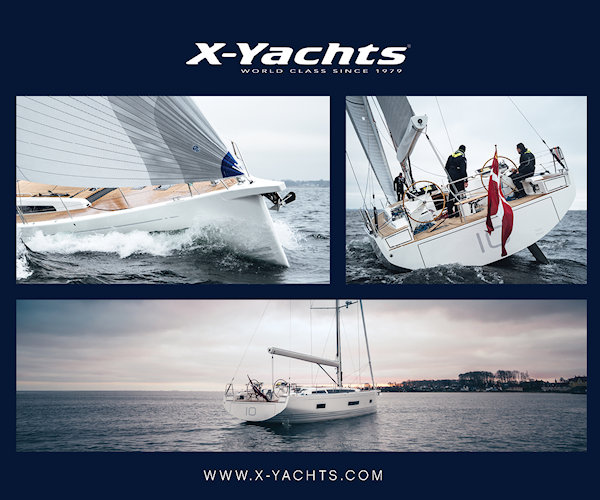
J Class Yachts were born from the introduction of the 'Universal Rule' in 1930, which for the first time efficiently controlled the size and performance of yachts built to compete for the America's Cup. Ten massive yachts conforming to the J rule were built between 1930 and 1937, although more were designed and tank tested. They were all but extinct, however three English yachts survived.
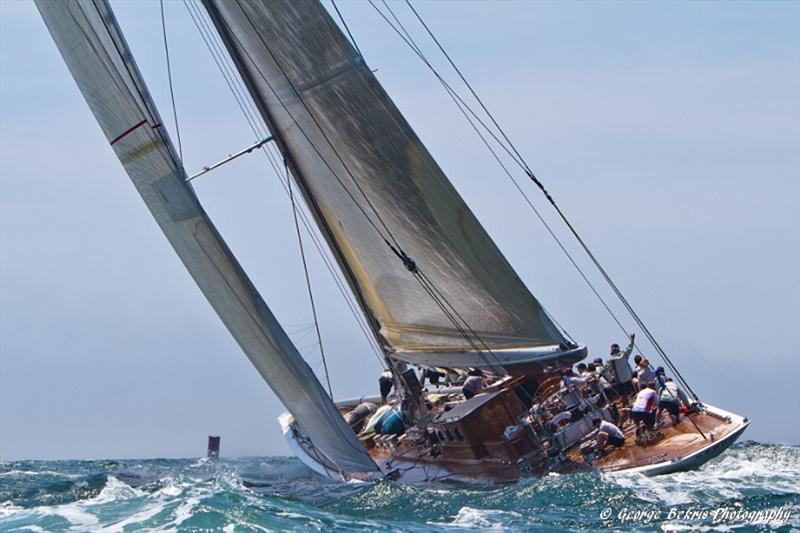
- Latest videos, from 2024
- Oldest videos, from 1931 onwards
Show photos from latest 2024 2023 2022 2021 2020 2019 2018 2017 2016 2015 2014 2013 2012 2011 2010 2009 2008 2007 2006 2005 2004 2003 2002 2001 2000 1999 1998 1997 1996 1995


The global authority in superyachting
- NEWSLETTERS
- Yachts Home
- The Superyacht Directory
- Yacht Reports
- Brokerage News
- The largest yachts in the world
- The Register
- Yacht Advice
- Yacht Design
- 12m to 24m yachts
- Monaco Yacht Show
- Builder Directory
- Designer Directory
- Interior Design Directory
- Naval Architect Directory
- Yachts for sale home
- Motor yachts
- Sailing yachts
- Explorer yachts
- Classic yachts
- Sale Broker Directory
- Charter Home
- Yachts for Charter
- Charter Destinations
- Charter Broker Directory
- Destinations Home
- Mediterranean
- South Pacific
- Rest of the World
- Boat Life Home
- Owners' Experiences
- Interiors Suppliers
- Owners' Club
- Captains' Club
- BOAT Showcase
- Boat Presents
- Events Home
- World Superyacht Awards
- Superyacht Design Festival
- Design and Innovation Awards
- Young Designer of the Year Award
- Artistry and Craft Awards
- Explorer Yachts Summit
- Ocean Talks
- The Ocean Awards
- BOAT Connect
- Between the bays
- Golf Invitational
- Boat Pro Home
- Superyacht Insight
- Global Order Book
- Premium Content
- Product Features
- Testimonials
- Pricing Plan
- Tenders & Equipment
J Class Yachts
Go inside the world of the iconic J Class yachts with reports on board these famous vessels, interviews with their owners and coverage of the J Class World Championships. Boat International is the official media partner of the J Class Association.
LATEST J CLASS NEWS AND FEATURES
Boat presents, from our partners, sponsored listings, yachts for sale, sailing news, more j class news and features.

The J-class yachts were originally designed to race for the Americas Cup between 1930 and 1937. Their revival in recent years was initially driven by the acceptance of aluminium as a hull material, which in itself created an incredible new level of interest in these fabulous America’s Cup Yachts of the 1930s. The close and competitive racing and well-crafted handicap system, together with exciting fleet starts, have attracted owners that enjoy competitive and fair racing combined with great cruising and charter options. Hoek Design has been involved in a string of projects as part of the J-class revival. The first was Lionheart, which was based on an original lines plan by Starling Burgers and Sparkman & Stephens. The original design is one of the lines plans originally drawn for the Ranger project and never built. J8 is the second J-class under construction and J11 the third, with various others in development at our office. We developed a Velocity Prediction Programme (VPP) geared specifically to J-class yachts and additionally calibrated using tank test data and wind tunnel data for J-class yachts. This sophisticated VPP software allowed us to analyse all existing yachts as well as all possible models that can be built according to the present J-class Association rules. The test designs which resulted from this research were also tested with computational fluid dynamics software, a study normally only carried out for America’s Cup and other high-profile racing yachts. This research gave us great insight into the qualities of these yachts, as well as into performance under the new handicap rules by the J-class Association. The new deck and interior layouts we have developed have given the new Js a multipurpose use for both cruising and racing.

CPM Model Sailboats
J class rc sailboats, header content region, insert text, image or banner ads here, or just delete this text and leave this area blank.
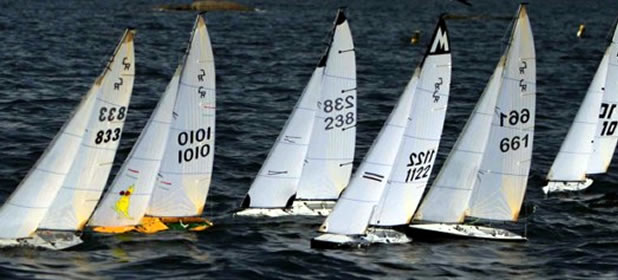
1/25 (36") Scale America's Cup high performance model sailboat
5ft Replica of the 1962 Americas Cup 12 Meter
45" Scale Model of the Olympic Star Boat
J Class Boat-Shamrock V
1/16 (8'-10')Scale Replica of the 1930's America's Cup Class Yacht
RMG Sail Winches
High Performance sail control winches

- Create as many news links as you need. News links are simple bullet lists.
This is where you would add your text, images, or advertising banner








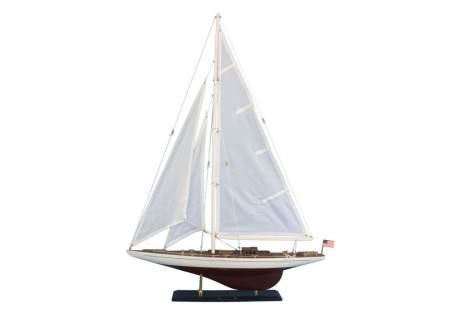

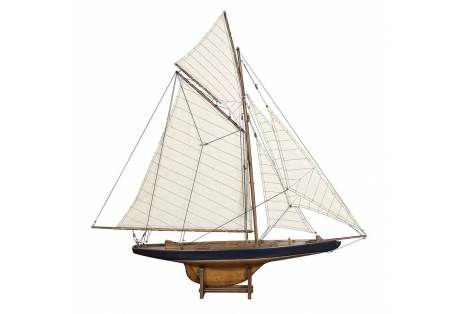
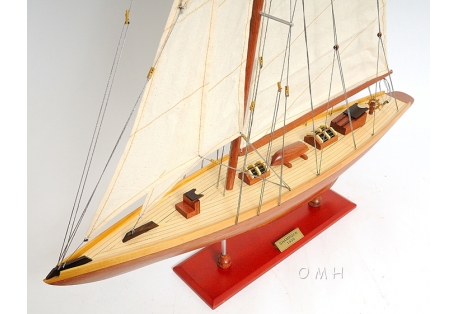
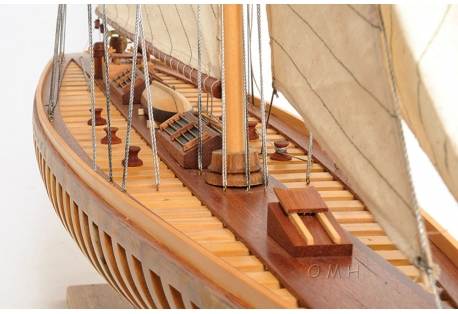
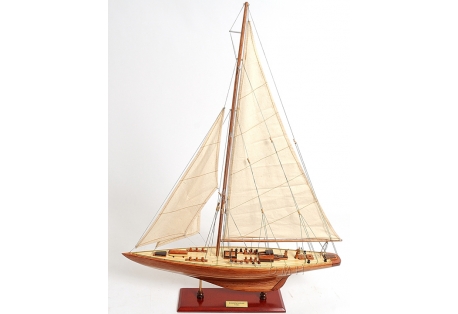
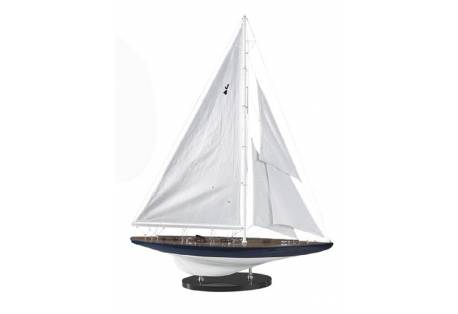
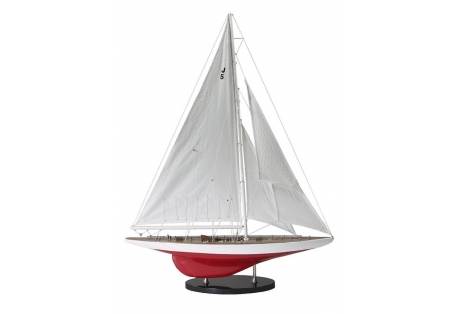
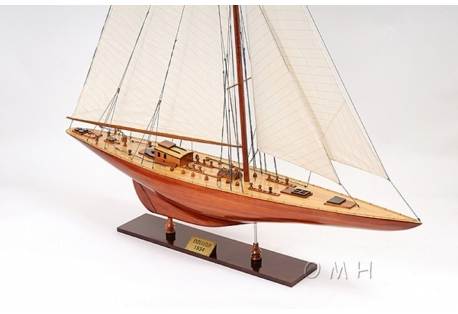
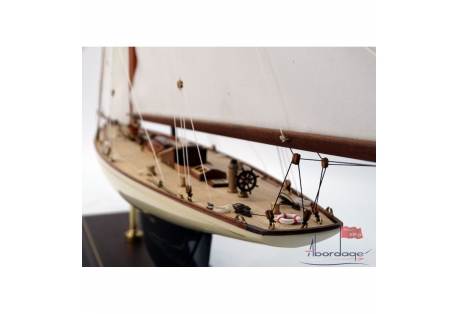
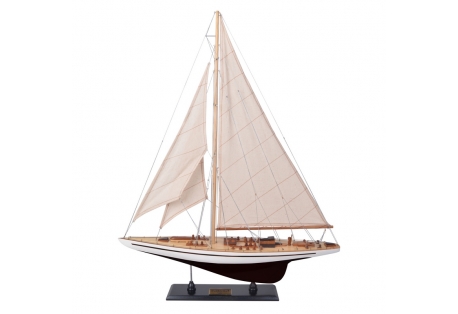
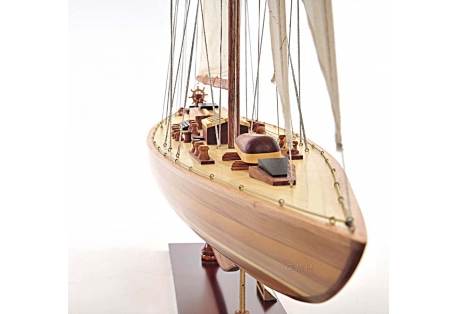
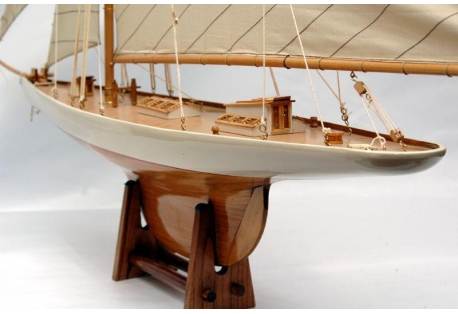
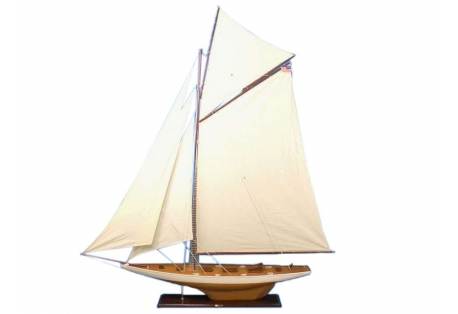
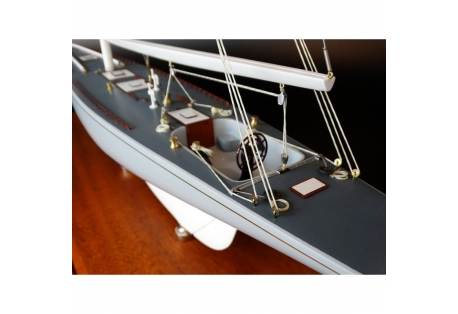



IMAGES
VIDEO
COMMENTS
J Class yachts Velsheda, Topaz and Svea downwind legs. The J Class is one of several classes deriving from the Universal Rule for racing boats. The rule was established in 1903 and rates double-masted racers (classes A through H) and single-masted racers (classes I through S). ... The New York Yacht Club refused the drop in size. The J Class ...
J Class yacht Velsheda sailplan. LOA: 39.25m/128ft 9in · LWL: 27.8m/91ft 3in · Beam: 6.57m/21ft 7in · Disp: 180 tonnes. Original lines: Charles E Nicholson. Modified design: Dykstra Naval ...
Ranger is a 41.55 metre replica of the J Class yacht of the same name, which was built for the 1937 America's Cup by a syndicate led by railroad heir Harold Vanderbilt. Starling Burgess and Olin Stephens had been asked to produce eight sets of lines and the one selected as most suitable for the conditions expected off Newport, Rhode Island — design number 77C — was one of Burgess ...
The J Class - so named because it was the letter allocated to its particular size by the Universal Rule to which the yachts were built (K and M Class yachts were, for example, shorter on the ...
The J-Class was adopted for America's Cup competition in 1928, looking forward to the next regatta in 1930. The Class itself, though, dated back to the turn of the century when the Universal Rule was adopted though no J-Class yachts had yet been built. The Rule used a yacht's various dimensions to calculate an equivalent rating in feet.
Before the J Class yachts came into existence, yachts were designed to be bigger and bigger. The towering rigs of the Big Boat Class such as 'Lulworth' and 'Britannia' dwarfed all other yachts. The late 1920s heralded discussion and agreement of the Universal Rule. This new formula controlled the size and displacement of the […]
J Class Regatta Falmouth Training. Discover J Class yachts with Yachting World. From race results to yacht profiles and videos, we have the definitive guide to the 2015 J class calender.
In 1929 Sir Thomas Lipton, who had reached worldwide fame through his tea business issued his fifth challenge for the America's Cup and commissioned Charles E. Nicholson, to design the first J-Class Yacht, Shamrock V, to the Universal Rule, signifying the birth of the J Class and the start of a new era in design evolution and racing.
NEW BREED OF J-CLASS FOR A NEW ERA OF J-CLASS RACING. NChED WIth OptImISED DESIGN FOR AChIEvING LINE hONOuRSthomas Sopwith (Sopwith Aviation Company) funded, organised and helmed the yachts Endea. ing) and Endeavour II in 1937.a history of excellencethe most advanced and most powerful thoroughbred sailing yachts of their day, the J-Class was ...
Svea is the newest J Class yacht in the current fleet and was launched in January 2017. At 143ft/43.6m Svea has the longest LOA by 15cms. Her original designs were drawn in 1937 by Swedish Olympian and renowned 6 and 8 Metre boat designer Tore Holm along with compatriot boatbuilder Gustav Plym, but war put paid to any hopes of a Swedish America's Cup challenge.
The owner then informed Hoek he'd like to build a new yacht based on that design. Warm, teak paneling lines the bulkheads, and nothing is fussy or overstuffed. Measuring 43.4 meters (142 feet), Lionheart is the longest J Class in existence. She also has astounding 17-meter (56-foot) overhangs. She's built entirely of aluminum, something the ...
J Class. J Class Yachts were born from the introduction of the 'Universal Rule' in 1930, which for the first time efficiently controlled the size and performance of yachts built to compete for the America's Cup. Ten massive yachts conforming to the J rule were built between 1930 and 1937, although more were designed and tank tested. They were ...
Complete running rigging package. Deck Hardware. (2) Two speed primary winches mounted on molded winch pads with. Winch handle and plastic holder. (2) black anodized jib tracks, with adjustment holes and two jib block on cars. (2) black anodized genoa tracks, with adjustment holes and cars. Aluminum spinnaker pole.
The tide turned fair again for the J Class only as recently as 1984, when American sailor Elizabeth Meyer bought the hulk of Endeavour and set about restoring her. "Elizabeth is very much the catalyst for the revival of the J Class with the renovation of Endeavour in 1984," Philip Lotz, commodore of the New York Yacht Club, said in 2017. "Her vision and inspiration… got restoration ...
91. J/70 Specifications (Sample Equipment List) Hull & Deck. Hull laminated with biaxial and unidirectional E-glass fabrics and balsa core for rugged durability. Deck molded with E-glass fabrics and Corecell foam core. High density core material and additional reinforcements in way of highly loaded hardware.
With the exception of Velsheda, all the original Js were built for the purpose of America's Cup racing. From 1929 to 1937, 20 J Class yachts were designed. Ten of these were built, and six raced ...
J Class Yachts. Go inside the world of the iconic J Class yachts with reports on board these famous vessels, interviews with their owners and coverage of the J Class World Championships. Boat International is the official media partner of the J Class Association. Editorial Features.
The J-class yachts were originally designed to race for the Americas Cup between 1930 and 1937. Their revival in recent years was initially driven by the acceptance of aluminium as a hull material, which in itself created an incredible new level of interest in these fabulous America's Cup Yachts of the 1930s. The close and competitive racing ...
The J Class models are 1/16th scale hulls of the J Class yachts that sailed for the America´s Cup from 1930 through 1937 as well as the yachts that were converted to the J Class and competed with the America´s Cup yachts in club regattas. ... The difference in sizes of the models is driven by the different sizes of the full size yachts.
Replica of the C.E. Nicholson designed J Class "Endeavour" The prototype built in 1984 was wood and was used as a plug for the subsequent fiber glass hulls. Design: hull - Norman Newell; interior and mechanics - John Watson and Evert DeKort ... It provides a reasonable comparison between yachts of similar size and type. It is based on the fact ...
The launch of the latest J Class yacht Svea this January takes the current fleet up to nine. That's a collective weight of around 1,600 tonnes, with a sail area over 8,360m2 (90,000ft2). Stack ...
The J Class models are 1/16th scale hulls of the J Class yachts that sailed for the America's Cup from 1930 through 1937 as well as the yachts that were converted to the J Class and competed with the America's Cup yachts in club regattas. ... The full size yachts varied in size from about 120 to 135 feet in length and had waterline lengths from ...
America's Cup 1933 Endeavour J Class Sailboat America's Cup 1933 Endeavour J Class Sailboat. Dimensions: 24" long, 4 1/2" wide and 31 1/2" tall. Dimensions: 24" long, 4 1/2" wide... $ 279. Add to cart. Sale! ... J Class yacht models for home and office decoration, bringing winning spirit into interior design. Information. Specials; New products ...
The Black Crowes have canceled their appearance set for Friday at the inaugural Minnesota Yacht Club festival at Harriet Island in St. Paul. The reason is "illness in the band," according to the ...